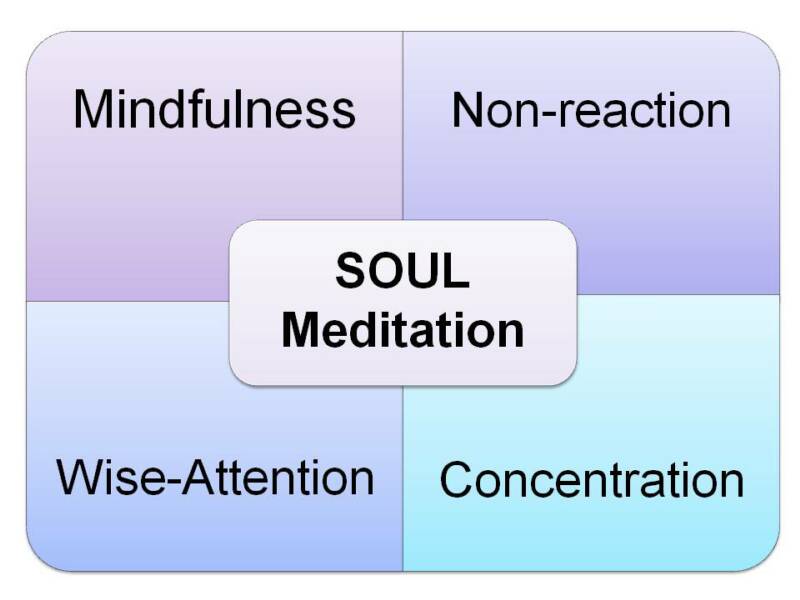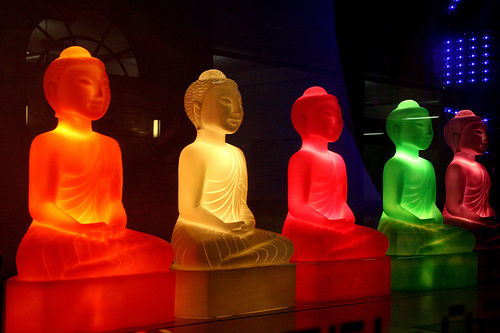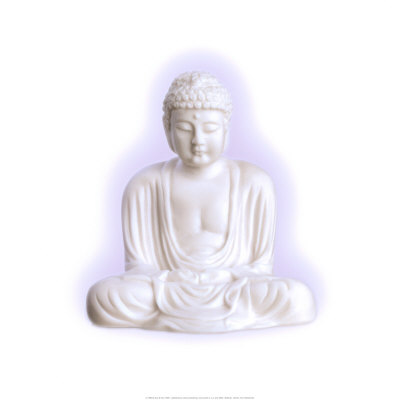

MEDITATIONS FOR DEVELOPING:



SOUL RESEARCH INSTITUTE
719-685-6294, 719-488-0548, 303-507-5169

Copyright 2008 SOUL Research Institute
C

50 SOUL Meditations
see list below














Meditations for
Developing the
Perfect Attitide
M1
M2
M3
M4
M5
Meditations for
Developing the
Perfect Lifestyle
M6
M7
M8
M9
M10
Meditations for
Developing the
Perfect Body
M11
M12
M13
M14
M15
Meditations for
Developing the
Perfect Breath
M16
M17
Meditations for
Developing the
Perfect Senses
M18
M19
M20
M21
M22
M23
Meditations for
Developing the
Perfect Mind
M24
M25
M26
M27
M28
M29
Meditations for
Developing the
Perfect Consciousness
M30
M31
M32
M33
M34
Meditations for
Developing thePerfect Intellect
M35
M36
M37
M38
M39
M40
M41
M42
M43
M44
M45
Understanding
Heaven/Hell/Gods
Meditations for
Developing
Perfect LOVE
M46
M47
M48
M49
M50


The practice of mindfulness develops present-moment-awareness and serves as a foundation for mental development (somewhat equivalent to IQ). The practice of non-reaction eliminates mental impurities, such as greed and hatred (equivalent to EQ plus the emergence of SQ). The practice of wise attention removes delusion, generates equanimity, and fuels understanding (equivalent to SQ plus the emergence of soul intelligence). When mindfulness, equanimity, and some degree of understanding are combined with higher levels of concentration, the mind is purified, sharpened, and perfected, ultimately leading to the awakening of soul intelligence. The stronger, the better tuned, and the better balanced the four wheels are the faster will be the development of higher intelligence.
As you’ll soon experience for yourself, soul meditation is active as well as passive. Just as any action that involves the four practices, such as walking or chanting, is considered a soul meditation, any non-action that involves the four practices, including sitting with closed eyes and observing the breath, would also be considered a soul meditation. Anything you actively or passively do that leads to wholesome mental development is soul meditation. There is no actual set meditative activity (or ritual) per se.
Yes, this gives you a lot of freedom to choose when and how to practice soul meditation once you develop a basic understanding of it. That is part of its beauty. It teaches self-mastery and eliminates the need for gurus and teachers who are sometimes dogmatic, strict, and even intimidating.
Any wholesome practice could be a soul meditation, including a breathing practice, chanting, prayer, and physical exercise. For instance, while you are doing a workout at the gym, you could become mindful of the bodily sensations of stretching, lifting, pulling, and pushing. You could learn not to react to pain and pleasure arising out of those sensations. You could give wise attention to their arising and cessation. And you could develop concentration by focusing on the movement of your breath. You could learn a great deal about yourself through your body and breath simply by applying these four practices to your physical activity.
It is not possible to understand soul meditation simply by hearing, thinking, or reading about it. As jumping in the water and swimming is necessary to understand swimming fully, you also have to directly experience the phenomena of mindfulness, non-reaction, wise attention, and concentration in order to know what soul meditation really is. Real understanding of soul meditation will come only through actual practice. Nevertheless, let us first try to comprehend its basic tenets through the following illustration.
Let us say that one cool autumn day you are walking along the beach and for some reason you decide to become deliberately aware of each step you are taking. You become aware of the coolness of sand as it touches your feet, and of the overall pleasant feelings that come to pass. You also deliberately remain conscious of any desires that arise, such as the desire for continuity of a pleasant experience arising from coolness of sand. In addition, you deliberately try to understand the cause-effect relationships behind the arising desires you perceive as you are walking.
If you try to do one or all of the above to some degree then you are doing a soul meditation. Note again that you are not sitting with closed eyes, but rather walking.
Now, on another occasion you are walking along the same beach. This time it is a hot summer day. Again you decide to become deliberately aware of each step you take. You become aware of the hotness of the sand as it touches your feet and the overall unpleasant feelings that come to pass. You also deliberately remain conscious of any desires that arise out of those feelings, such as the desire for cessation of unpleasantness arising from the hotness of the sand and a desire or longing for coolness. In addition, you deliberately try to understand the cause-effect relationships behind the arising desires you perceive as you are walking.
In both of the preceding scenarios, being mindful means being aware of your steps, the touch of the sand (coolness or hotness), the mood of liking or disliking the sensations, and the cause-effect relations—in this order of increasing mindfulness. When you become mindful, your mind is neither in the past nor in the future. You are not reminiscing about the past, nor are you planning ahead. You are abiding in the present moment.
This abiding is not a mundane presence of mind. Rather, it is an awareness of what is happening on the body level (the steps), the mind level (the feeling of coolness or hotness), the conscious level (the mood of liking or disliking), and the level of causal laws (the cause-effect relationships or the conditionality of experience).
At first, practicing mindfulness may be the full extent of your soul meditation. But once mindfulness becomes a habit you can begin to realize that the mood of liking or disliking is your reaction to feelings of coolness and hotness that resulted from external environmental conditions, such as weather and sand, and the condition of your body-mind. Once you realize this, you practice remaining aware and not reacting to the feelings that arise, which means you aim to remain neutral and not to develop liking (for coolness) or disliking (for hotness).
When you remain mindful and non-reactive in this way, you purify consciousness. You remove greed (liking) and hatred (disliking) by not reacting. This results in equanimity.
Once mindfulness and non-reaction become a habit due to regular practice, you can then begin to give wise attention to your experience and realize experientially that all feelings are simply coming and going dependent upon the external and internal conditions mentioned above. Due to such wise attention, you eventually stop identifying with the feelings, which means that you look at feelings as mere feelings that arise due to conditionality. When that happens, your desires (longing for coolness when it is hot or longing for heat when it is cold) begin to lose their strength, subside quickly, and help you remain in equanimity.
Sooner or later, due to an increasing degree of wise attention you begin to realize that feelings or desires are impermanent in nature. You also begin to realize that there was really no “you” in the experience of coolness or hotness (feelings) or in the desires that resulted from it. You realize that “you” got created every time there was a reaction or identification with those feelings or with the desires resulting from those feelings. You also realize that “you” got created due to a perception of being separate from the conditionality (the environment) that gives rise to feelings and desires.
Wise attention eventually brings about an understanding of impermanence and non-self and removes delusion about the separate self (the ego). With further practice, it is possible to perceive coolness and hotness, pleasantness and unpleasantness, and liking and disliking merely as phenomena of body-mind-consciousness driven by conditionality and not as things that are happening to you.
With ardent and consistent practice, due to increasing mindfulness, non-reaction, and wise attention, your mind and consciousness begin to concentrate (or focus) at higher levels. They begin to work evenly, harmoniously, unscatteredly, undistractedly, and unwaveringly around a single object. As this focus becomes increasingly one-pointed, you begin to further sharpen and purify the mind until you are thoroughly established in equanimity and in non-delusion. If you recall, these are the two most prominent mental elements of SQ and soul intelligence.
In the preceding example, because you applied mindfulness, non-reaction, wise attention, and concentration (the four fundamental constituents) to a walking activity along the beach and developed intelligence, the walking activity became a soul meditation. In short, any activity, practice, or experience that involves the four fundamental constituents is a soul meditation. Although the four constituents are not always present with the same intensity, there is always a trace of all of them when you are practicing soul meditation.
How one Prepares for a
Lifestyle of Meditation
Simple: By removing clumsiness and becoming skillful in the way of daily living, in the way of socializing, in the way of applying effort, in the way of arousing volition, in the way of recollection, and in the way of developing equanimity.
Soul meditation does not require goal setting, hard work, effort, or even passion, only pure skill. In order to develop such skill, I recommend adopting the following principles.
• Choose a living place free of dust, heat, smell, insects, strong wind, noise, and nuisances
Choose a living place free of dust, heat, smell, insects, strong wind, noise, and nuisances
• Choose healthy foods that are suitable for your climate and eat them in moderation
Choose healthy foods that are suitable for your climate and eat them in moderation
• Maintain silence most of the time. Speak in moderation and only if necessary
Maintain silence most of the time. Speak in moderation and only if necessary
• Live in the company of virtuous and wise people. Avoid worldly-minded people
Live in the company of virtuous and wise people. Avoid worldly-minded people
• Study the qualities of enlightened people
Study the qualities of enlightened people
• Stimulate your mind by contemplating the benefits of meditation, such as attaining higher levels of intelligence, as well as peace of mind, serenity, and bliss
Stimulate your mind by contemplating the benefits of meditation, such as attaining higher levels of intelligence, as well as peace of mind, serenity, and bliss
• Practice meditation only when it is appropriate to practice. Do not force yourself to meditate. Exert the mind only to such an extent that it does not feel forced. If you feel agitated, then you are forcing the mind. When the mind is not at all willing to meditate, become aware of the fact that you are not able to meditate and simply let go for a while. Before trying again, read inspirational books, listen to spiritual discourses, do physical and breathing exercises, or simply take a walk in the woods
Practice meditation only when it is appropriate to practice. Do not force yourself to meditate. Exert the mind only to such an extent that it does not feel forced. If you feel agitated, then you are forcing the mind. When the mind is not at all willing to meditate, become aware of the fact that you are not able to meditate and simply let go for a while. Before trying again, read inspirational books, listen to spiritual discourses, do physical and breathing exercises, or simply take a walk in the woods
• Give importance to developing an inclination for meditation. Develop a sense of urgency for practicing it. However, do not crave it. Do not try to do it. Just meditate and let go of any desire for the end results. Just let it happen
Give importance to developing an inclination for meditation. Develop a sense of urgency for practicing it. However, do not crave it. Do not try to do it. Just meditate and let go of any desire for the end results. Just let it happen
Most importantly, develop an experiential understanding of the four constituents of soul meditation. For this purpose, as I recommended earlier, meditate daily, at least in the beginning. Become firm and unwavering in your daily practice.
Using Breath as an
Object of Meditation
For a daily, seated meditation, you need a perfect object to meditate on. Use your natural breath, because the natural breath is:
• Unadulterated, unmodified, and unmixed, and thus it provides us with purity, which is an important aspect in maintaining wholesomeness of meditation,
Unadulterated, unmodified, and unmixed, and thus it provides us with purity, which is an important aspect in maintaining wholesomeness of meditation,
• Non-religious and non denominational, universal and common to all people,
Non-religious and non denominational, universal and common to all people,
• Unlimited in supply and it always accompanies the meditator,
Unlimited in supply and it always accompanies the meditator,
• Beneficial—even prior to meditation it provides nutrition and supports physical life,
Beneficial—even prior to meditation it provides nutrition and supports physical life,
• An easy and quiet object. It does not create sound or thought. It is neither repulsive, nor attractive. It is neutral, peaceful, and sublime in its own individual essence,
An easy and quiet object. It does not create sound or thought. It is neither repulsive, nor attractive. It is neutral, peaceful, and sublime in its own individual essence,
• The closest link between the body and mind, so it serves as a portal for mind-body conditioning,
The closest link between the body and mind, so it serves as a portal for mind-body conditioning,
• An internal as well as an external object, thus providing totality during observation,
An internal as well as an external object, thus providing totality during observation,
• Accessible to people at all levels of meditative absorption, from preliminary to advanced, and
Accessible to people at all levels of meditative absorption, from preliminary to advanced, and
• An aspect in the development of equanimity, tranquility, sublimity, and peace.1
An aspect in the development of equanimity, tranquility, sublimity, and peace.1
SOUL Contemplation
The Secondary Tool for Developing Intelligence
Once you are established in the practice of SOUL Meditation, you will develop an adequate level of Intelligence (IQ+EQ+SQ) which will now include mindfulness and concentration as mental faculties. You will also develop a certain level of equanimity (neutrality of mind). When that happens, you are ready for a unique kind of spiritual practice called “SOUL Contemplation (henceforth referred as simply "contemplation" whenever necessary)” which is really nothing but an insightful meditation.
In contemplation, there is lot of thinking and thoughtfulness; however, it is rooted in equanimity which is already present due to the primary practice of SOUL Meditation. The Intelligence (or wisdom) which arises through real contemplation is always rooted in this equanimity. It is like saying, “If Intelligence (wisdom) were a tree, then equanimity would be its roots.”
Many people wonder whether contemplation is same as thinking. Contemplation is like thinking but all thinking is not contemplation. When thinking is based on equanimity, then only it becomes contemplation. Therefore, thinking of a meditator who is established in equanimity (neutrality of mind) can only be termed as contemplation. It is extremely difficult to contemplate unless you are an established meditator. See example of SOUL Contemplations: M35 through M45.
What Meditation is
In common language, the word “meditation” loosely refers to the activity of sitting down and concentrating on a physical or mental object, such as a flame, a dot, a mantra, a sound, an image, or a thought. The word also refers to a variety of reflective and introspective practices taught by different spiritual traditions.
The practice of meditation rings a mystical or supernatural tone for religious people. For martial artists, some monks, and some yogis, it is a way of developing their physical and mental muscles. For secularists, it represents a form of relaxation, sensual awareness, and biofeedback. For a scientific community composed of medical doctors, physiologists, psychologists, and psychiatrists meditation is a form of therapy and the subject of mind-body research. Last but not least, for some New Age enthusiasts and some of the Hollywood moviemakers, meditation is considered cool and trendy.
In reality, none of the preceding descriptions indicates the essence of meditation. Meditation does not only mean sitting down and concentrating. That is a limited practice. So whenever the word meditation comes to mind and you visualize a person sitting cross-legged with closed eyes, immediately rid your mind of that image. Otherwise, you will never fully understand the essence of meditation.
Meditation also does not mean reflection, introspection, relaxation, biofeedback, therapeutic treatment, or a way of developing physical and mental prowess. That is just a partial scope of it. Meditation is neither mystical, nor supernatural, and it definitely does not belong to pop culture.
Meditation is essentially the phenomena of mental development. It is basically the procedure by which we develop intelligence and thereby experience mental development. It is a procedure, as well as an experience.
We could also say that any experiential procedure that develops any level of intelligence (IQ, EQ, or SQ, all the way to soul intelligence) is a meditation. The necessary condition is the development of intelligence.
(click on the links to your left for detailed description on IQ, EQ, and SQ).
Chanting or relaxing can become a true form of meditation provided it incorporates the development of intelligence. For example, while you are trying to relax by listening to soft soothing music, if you simply become aware of how you are feeling, you may develop an understanding of the relationship between the softness of sound and the softness of feeling. You may then use this knowledge to change your feelings by simply changing the characteristics of sound in you and around you. By simply making your voice softer, by removing noise and harshness from your immediate environment, or by removing yourself from a noisy environment, you may be able to improve your feeling state to better.
Similarly, while chanting a mantra or a word such as “om” or “love,” if instead of simply uttering it you focus on the meaning of it, you may be able to cultivate it in your mind and make it your nature. Likewise, simply praising or uttering your deity’s name may be relaxing and may even assist you in minimizing discursive thinking, but it won’t become a meditation until you focus on the qualities of your personal god. When you do that, you are automatically inspired by those qualities and you start developing them. For example, if you recollect and concentrate on the qualities of Jesus (such as loving-kindness, compassion, mercy, and forgiveness) while listening to or singing his name in prayer, you are more likely to become like him.
An ascetic concentration practice of a martial artist, a monk, or a yogi can become a meditation if it is used for sharpening the mind (developing penetrating focus), so that subtle realities about the ego can be pierced, exposed, and purified. A mere ritualistic training of concentration for becoming powerful does not qualify as true meditation unless it leads to purification of mind.
Note that “purification” is a spiritual word for phrases like “evolution” and the “development of intelligence.”
SOUL Meditation
The Primary Tool for Developing Intelligence
True to its essential nature, as clarified above, Sam Adettiwar (Founder of Soul Research Institute) has developed a meditation practice called soul meditation. It is a unique form of meditation, which is specifically designed to develop all four levels of intelligence by way of purifying, sharpening, and perfecting the mind.
Soul meditation is the result of Sam's awakening experience, a spontaneous creation. Here, it is being conveyed to you in a structured manner that is the result of further reflection.
Soul meditation is like a spiritual vehicle with a four-wheel drive. The four wheels are analogous to the four intertwined practices of mindfulness, non-reaction, wise attention, and concentration that make up soul meditation. (Click on orange circle for details).





